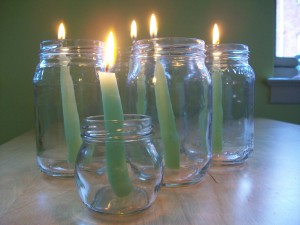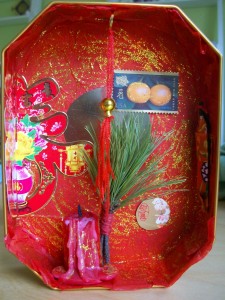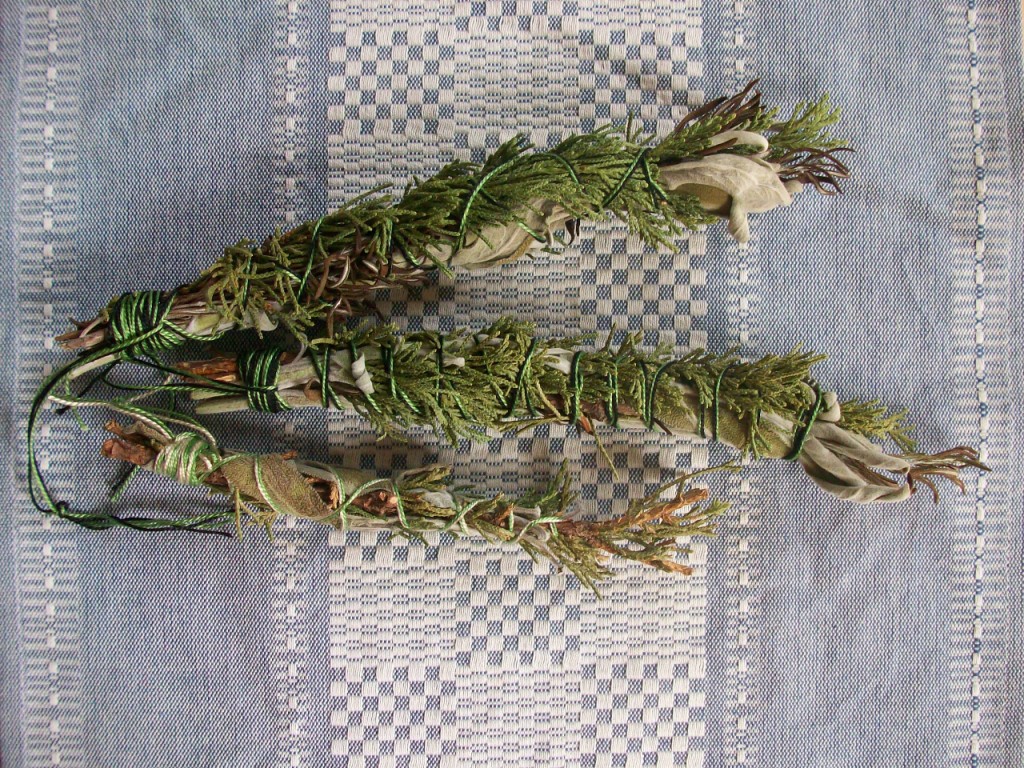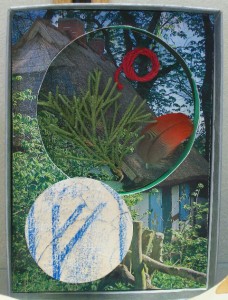Spotlight on Walpurgis Night
Witches and Wiccans around the Northern Hemisphere are gearing up for Beltane, or May Day, this coming Sunday. Falling on Beltane Eve is a holiday called Walpurgis Night, which has long been regarded as the time witches would gather on a rocky mountain in Germany known as the Brocken. While Walpurgis and Beltane have similar timing and some common themes, Walpurgis Night has traditions, lore, and correspondences all its own, and happily, Llewellyn has just published a book devoted to this interesting topic: Night of the Witches: Folklore, Traditions & Recipes for Celebrating Walpurgis Night. In honor of Walpurgis Night on Saturday, I interviewed the book’s author, Linda Raedisch, to find out more.
First things first – Walpurgis Night falls on April 30, or Beltane Eve. How is it different from Beltane? What is its significance?
The oversimplified answer would be that Beltane is the Celtic observance and Walpurgis Night the Germanic. When you look back into history and prehistory, the line between Celtic and Germanic and even Slavic are not at all clear, especially in Central Europe. It was a long time before the Roman designations caught on and the peoples concerned realized that they were supposed to be different ethnic groups. If you could go back to Roman times, I don’t think you would see so much difference between these peoples’ celebrations of May Eve. Since then, the so-called “Germanic” version has evolved into a night that’s first and foremost about witches. In the Middle Ages it was about driving them out. Now it celebrates them. Among the general public, kids dress up as witches and devils just as American kids do at Halloween, but it’s also about today’s German Witches celebrating their identity. Unlike many holidays, Walpurgisnacht has a geographic epicenter: a mountain called the Brocken in northern Germany. Nowadays, Witches gather there openly, but they were believed to gather there in secret since the time of Charlemagne and probably before.
Night of the Witches is a rather out of the ordinary book for Llewellyn to publish, as it does not deal with modern Wicca in the least! That said, do you think Wiccans will still enjoy it and find something of value in it? Can witches celebrate Walpurgis Night too?
 One of my few friends who actually read the book asked me, “Wow, how do you know all that arcane stuff?” For Wiccans it’s not arcane stuff at all. Some of the content is for the general reader who has never heard of runes or besoms or valkyries. But then again, since Wicca is essentially an English religion, Wiccans might find something new in the book’s European slant. It’s possible that some Wiccan readers may not yet have run into an Alraune or a Bilwis or a Drude. And of course, the crafts and recipes are there for everyone. I’ve noticed that modern Witches always seem to be on the lookout for gifts for one another – is it all those Sabbats? You can use some of the craft ideas in the book to make gifts.
One of my few friends who actually read the book asked me, “Wow, how do you know all that arcane stuff?” For Wiccans it’s not arcane stuff at all. Some of the content is for the general reader who has never heard of runes or besoms or valkyries. But then again, since Wicca is essentially an English religion, Wiccans might find something new in the book’s European slant. It’s possible that some Wiccan readers may not yet have run into an Alraune or a Bilwis or a Drude. And of course, the crafts and recipes are there for everyone. I’ve noticed that modern Witches always seem to be on the lookout for gifts for one another – is it all those Sabbats? You can use some of the craft ideas in the book to make gifts.
Chapter Nine is called “Getting the Coven Together.” As a non-Witch, I was thinking of other non-Witches forming a sort of “coven for the day” to celebrate Walpurgis Night. The activities are mostly party ideas, some less reverent than others. They’re certainly not meant to take the place of whatever full-time Witches are doing on this Sabbat. But I think absolutely that real Witches can celebrate Walpurgis Night too. After all, it’s their day!
There are a ton of fun craft projects in this book. Can you tell us a little bit about them? What is their difficulty level? Should we start on these crafts before April 30?
 The Walpurgis wands are a kind of smudge stick, so you should make them a couple weeks ahead of time if you want them to be dry enough to burn on Walpurgis Night. But a lot of the crafts are designed to get you out and about on the night itself, gathering mullein leaves for the hag tapers or apple blossoms to arrange around your cauldron and greening candles. On the other hand, you can make a witch box whenever the mood takes you. This year, I indulged my inner “glitter witch” by making a Lunar New Year Leftover Box using bits and pieces of our Chinese New Year decorations. Lots of red and gold.
The Walpurgis wands are a kind of smudge stick, so you should make them a couple weeks ahead of time if you want them to be dry enough to burn on Walpurgis Night. But a lot of the crafts are designed to get you out and about on the night itself, gathering mullein leaves for the hag tapers or apple blossoms to arrange around your cauldron and greening candles. On the other hand, you can make a witch box whenever the mood takes you. This year, I indulged my inner “glitter witch” by making a Lunar New Year Leftover Box using bits and pieces of our Chinese New Year decorations. Lots of red and gold.
There’s a wide range of crafts in the book. The easiest is probably the origami kitchen witch. You don’t even really have to put bristles on the broom; just use a fringed party toothpick. Orange crinklies will make it look like your witch has flames shooting out of the end of her besom. Kids can make these no problem and hang them in the windows or wherever.
At the other end of the spectrum there’s the Witch’s Brew Pouch. This one is for the serious crafter who’s willing to go out on a limb and work with quality materials. I’ve been doing beadwork as a hobby for about twenty years. I really enjoy it, so I wanted to include a beading project in the book. I taught – or tried to teach – this craft to a group of women about a year and a half ago and they had a lot of trouble with it. It was a free workshop, and I think they equated “free” with “easy.” If you want to do nice beadwork, you’ve got to use tiny needles, tiny beads, and thread you can hardly see. That’s just the way it is. But with a little practice, the results can be beautiful.

How about the more than twenty yummy recipes in the book? What have you got in store for the reader, besides my personal favorite, “Crappy-weather Tea”? (Here in Minnesota, we can use that right up to the end of April!)
The recipes include traditional seasonal standards like the Sima, or Finnish mead, the Finnish May Day fritters and the cold May punch. Then I’ve adapted some German recipes specifically for Walpurgis Night. That’s how I came up with the April Hoppelpoppel and the Berry Porridge with Brocken Tops and Vanilla Sauce. The idea of a Walpurgis high tea is my own invention. I served the cucumber sandwiches and Red-cap Cake at a book signing earlier this month and they went over pretty well.
You have a whole chapter on different types of traditional witches from Germanic mythology, like the Ash Wife, Easter Witches, Weathermakers, Wolf Crones and much more. Are these relevant archetypes for modern Witches? Which one captured your interest the most?
I can’t really speak for modern Witches since I’m not one, but what I found personally relevant is the idea of the witch as a free spirit and force of nature. As I point out in the beginning of the chapter, the idea of the witch as Satanic only peaked in the sixteenth century and fizzled out a couple of centuries later. Unfortunately, it’s the one that’s really stuck in some people’s minds. The witches in my book are not anti-Christian but extra-Christian. They function outside Christianity and Christian social norms.
It was the valkyries who captured my interest the most. Many people, when they hear the word “valkyrie,” think of a fat opera singer. Not! If the original valkyries were real women who devoted themselves to Odin, then they were probably living rough in the wilderness. They could hardly have been fat. The Nordic valkyries appeared almost exclusively in dreams, while the Anglo-Saxon waelcyrge were conceived of as scavenging birds rather than actual women. Brunhilda is the most famous of the valkyries – I devoted several pages to her in the 2011 Witches’ Companion – but there were tons of others. And they were all scary!
I loved the herbal chapter of your book. How did you research the herbs? Do you grow some of them yourself?
I mention in the book that I’m more of a gatherer than a grower. I’m ashamed to say that I’ve had mint die on me. Mint! I mean, it’s invasive! I do best with plants that grow from large seeds, like sunflowers, nasturtiums, beans – the kinds of seeds they give preschoolers to grow! I did have to grow the chervil for the green soup myself because it’s so hard to find fresh in this country. It did pretty well, but it didn’t survive the hot New Jersey summer. Thank goodness you can freeze it!

My interest in herbs was originally an aesthetic one. I’ve been visiting the medieval gardens at the Cloisters in New York City since I was a teenager, and before that my grandmother took us to a lot of open air museums in Germany. Last summer, I got to visit the new Viking garden at Haithabu. (Yes, the Vikings were gardeners too!) The horse beans looked great growing behind the wattle fence but I sure wouldn’t want to eat them every day. There are no horse bean recipes in the book! I love old time herbs not just for their looks but for the names and the magical properties people ascribed to them.
Aside from the chervil, the bear’s garlic and possibly the angelica, all the herbs in Chapter 7 are easy to find either at the grocery store, the greenhouse, or growing by the side of the road, so I hope readers will seek some of them out in person, so to speak. Especially the sweet woodruff. If you want to know what Walpurgisnacht smells like, dry some sweet woodruff and stick your nose in it.
It’s also interesting that as a non-witch, you decided to write about this topic. What is it about witches that fascinated you in the first place? And now that you’ve gotten to know us better, any chance you will become a witch in the future?
In this book, I got to indulge my twin fascinations: witches and nuns. Chapter 4 is mostly about St. Walburga who was a real life English abbess. Why the fascination? Hmmm. . . In both cases I would have to say it started with the clothes. Especially the head gear. Shallow, I know! As a kid, I loved watching reruns of The Flying Nun. I even made myself a paper version of Sister Bertrille’s winged cap. Needless to say, I never wore it out of the house. In Chapter 5, you can find instructions on how to make a paper witch’s hat, so I guess I haven’t changed that much.
The witch thing too goes back to childhood. My dad took me for walks in the woods and read me fairy tales, mostly Hans Christian Andersen. If you think about it, the witches in fairy tales rarely kill people. A witch might turn you into a swan, put you to sleep for a while or kidnap you and raise you as her own. In fact, often the worst thing a witch can do is give you exactly what you asked for. I mean, the sea witch didn’t knock on the little mermaid’s door and offer to sell her a pair of legs, did she? The little mermaid came to the witch’s door.
I think witches and nuns both embody womanhood at its most mysterious.
 As for becoming a witch in the future. . . Well, it’s a bit of a commitment, isn’t it? Kind of like becoming a nun, only different. I think I’m a little too flaky to be either. I certainly have more sympathy for Wiccans since I started writing this book. I went into the book with an awareness that Wiccans existed, they had a religion and that some of them were nice. Other members of the general public, and I mean educated people, seem to think they’re either Satanic or they’re a joke.
As for becoming a witch in the future. . . Well, it’s a bit of a commitment, isn’t it? Kind of like becoming a nun, only different. I think I’m a little too flaky to be either. I certainly have more sympathy for Wiccans since I started writing this book. I went into the book with an awareness that Wiccans existed, they had a religion and that some of them were nice. Other members of the general public, and I mean educated people, seem to think they’re either Satanic or they’re a joke.
A while back, a fellow writer who knew I was looking for some cash told me about a job adapting bible stories for 5- to 6-year-olds. It sounded like exactly the sort of thing I would be good at. But when I listed my publication credits for the prospective editor, that was the end of it. The publisher couldn’t consider someone who had written about witches. They couldn’t even consider someone who had written about Halloween! By contrast, when I came to Llewellyn wanting to write about witches, no one asked me whether or not I was a witch, or whether or not I’d ever written anything about the bible. So I’m definitely feeling more at home with witches.
What will you be doing this weekend for Walpurgis Night?
Oooh, I was afraid you’d ask that! One thing my youngest daughter and I always do on Walpurgis Night is take a walk, just as it’s getting dark. In fact, that “stand of birches by the edge of the railroad tracks” that I mention in the book’s conclusion is a real place. We’ll be paying a visit to those trees, as well as whatever witches happen to live in them.
I have to take my crafts out of the display case at my local library the day before, so I’ll have all my witchy things at home again. Maybe I’ll arrange a private showing for my neighbors. I suppose I could work up to making some Walpurgis pancakes. You’ve got to have some kind of fire on Walpurgis Night, and I’ve got my greening candles all ready to go. I’ve already got some white “fairy lights” (I like the British term!) strung up in the living room window along with my Pier One pentacle lanterns. Oh, what the heck! I think I’ll have a party!
Thank you, Linda, have a great one! To read more from Linda Raedisch, click here. If you’d like to browse inside her new book, click here.











Great Post 😀
thought you might enjoy my Beltane Blessing machinima film
http://www.youtube.com/watch?v=VElZSplpxQc
Bright Blessings
elf ~
[…] Spotlight on Walpurgis Night (llewellyn.com) […]
(Paperback)/b /divpI just got this book in the mail and I must say that is is as good as other Witches Spell A Day almanacs. What this book oferfs is just what the title say, it is a spell a day. Each day in 2012 is marked with occult information about that day, special symbols and meanings for the day and correspondences such a incense And star signs associated with that given day, something which can be very helpful in planning out what spellwork to do on a given day. In addition to this each day have a spell, a simple ritual which should take no more than a few seconds to a few minutes to do./ppI think following the little spells presented in this book can help bring more meaning to each day for a practicing Pagan, I also think this is an ideal way to begin practice as the spells for the most part is very short and simple and will not take up allot of your day, while they at the same time help you connect to the energy each day possesses. This is not a purely Wiccan book, the spells can be used by Wiccans, but this is a book for all sort of Pagans or even non Pagans who want to add a bit of magic to their everyday life./ppI also think this book is a good and cheap general spellbook, most of the spells is not so specific to 2012 or to their given day that they can not be used at other times. I think some of the spells in this book will make it into my Book of Shadows and if you find this book in 2013 or 2090 for that matter I think this book is still relevant./ppNow I have one complaint about this book, while most of these spells are very simple and show that you do not need to have allot of tools and expensive tut to practice practical magick, some of these spells, not allot, but some of them use allot of herbs. This is not necessarily bad but at times it seam like the folks who put this book together forgot that not every Pagan have a herb collection the size on Mt Everest. The point of this book is to have simple, accessible spells written by various authors to benefit beginners and more experienced Pagans alike, well most of the bock manage this goal, but a few of the herb spells assume the reader have a very well stocked herbal cabinet./ppAll in all I think this is a good buy, the spells are fun and practical and is a great way to bring magick into everyday living. I love books that remembers that to be a magickal person do not just mean one celebrate the Sabbats and at special occupations, it means being magickal every day, in every action, no matter how mundane. This is a great little book and I definitely recommend it./pdiv style=”padding-top: 10px; clear: both; width: 100%;”div style=”float:left; padding-right:15px; border-right:1px solid #CCCCCC”div style=”padding-bottom:5px;”b class=”tiny” style=”color:#666666;white-space:nowrap;”